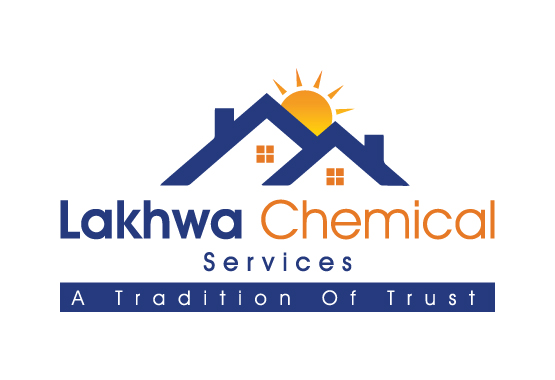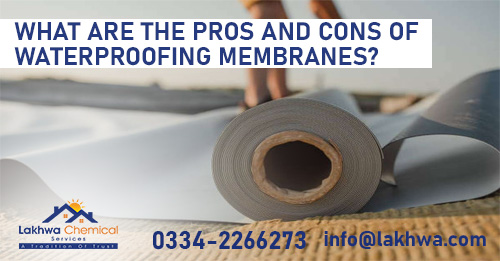What are the Pors and Cons of Waterproofing Membranes?
Waterproofing membranes play a crucial role in protecting structures from the effects of water ingress. Whether in residential, commercial, or industrial, these membranes provide a strong barrier that lasts for years to come. However, like other technologies, waterproofing membranes have benefits and drawbacks.
Let’s discuss further!
Pros of Waterproofing Membranes
Effective Barrier
Waterproofing membranes render a durable and effective barrier against moisture. This protection is vital against heavy rainfall, flooding, or high humidity. It prevents water from seeping into the building’s structure and causing damage.
Increased Durability
Waterproofing membranes are designed to withstand the test of time. These layers offer long-term protection, resist damage to materials like concrete, wood, and steel, and ensure significant cost savings.
Read More
How Much Does Roof Grip Membrane Cost in Pakistan?
How Does Waterproofing Chemical Work as a Seepage Solution in Karachi?
Why Waterproofing Repair Works Considered Home Services Renovation in Karachi?
Versatility
Waterproofing membranes are adaptable to various surfaces and applications, including roofs, basements, foundations, tunnels, and swimming pools. Due to this characteristic, membranes are used for a wide range of projects (new and existing).
Easy Installation
In comparison to traditional waterproofing materials, such as liquid coatings or tar, modern ones are easy to install. They come in rolls or sheets, which can be applied by professionals in quick time.
Minimal Maintenance
Waterproofing membranes require minimal maintenance, making them a cost-effective solution for potential customers. Membranes reduce the need for ongoing repairs and maintenance associated with water damage.
Better Air Quality
By preventing moisture infiltration, waterproofing membranes can help maintain a healthy indoor environment. Moisture and water ingress can lead to mold and mildew growth, which can impact indoor air quality and the health of building occupants.
Energy Efficiency
Proper waterproofing can contribute to increased energy efficiency. By preventing water from entering the building, insulation and HVAC systems can function more effectively, resulting in lower energy consumption and reduced utility costs.
Read More
Importance of Roof Waterproofing in Pakistan
Why It’s Better To Rely on Roof Waterproofing Contractors in Pakistan?
Is Waterproofing Shower Walls and Floor Important for Every Home?
Cons of Waterproofing Membranes
Initial Cost
While waterproofing membranes offer long-term benefits, the initial cost of materials and installation is high compared to some other waterproofing methods. This cost can be a deterrent for some budget-conscious projects.
Installation Issues
While waterproofing membranes are easier to install than other alternatives, their application is complex and precision-driven. Improper installation can lead to leaks and water damage, emphasizing the importance of hiring skilled professionals.
Limited Aesthetics
Some waterproofing membranes are not aesthetically-appealing. They are concealed by other building materials, such as facades or roofing, but when visible, they might not contribute to the architectural design.
Maintenance Challenges
While waterproofing membrane require minimal maintenance, it can be complex and costly. Identifying and repairing a breach in the membrane can be challenging, as it involves the tearing and reapplication process.
Environmental Concerns
Some waterproofing materials, such as bitumen-based products, can have environmental concerns. Bitumen, for instance, is derived from crude oil and may contribute to environmental degradation. However, more environmentally friendly options are available, such as synthetic rubber or PVC membranes.
Compatibility Issues
Compatibility issues can arise when waterproofing membranes are used in conjunction with other building materials or systems. For instance, certain adhesives or sealants may not bond well with the membrane material, which can compromise the effectiveness of the waterproofing system.
Vulnerability to Punctures
Some waterproofing membranes are vulnerable to punctures from sharp objects or debris (if installed in areas with high foot traffic). This vulnerability can lead to leaks if not protected properly.
Ending
Waterproofing membranes offer a smart solution for protecting buildings and structures from water damage. Their effectiveness against moisture, versatility, and long-term benefits make them a valuable choice in the construction industry. However, the initial cost and compatibility issues are some of the disadvantages that need to be kept in mind. When selecting a waterproofing solution, it’s essential to weigh the pros and cons against the specific needs and goals of the project to make an informed decision.
If you want to apply a long-lasting membrane on the roof, contact Lakhwa Chemical Services.


Leave a Reply
Want to join the discussion?Feel free to contribute!